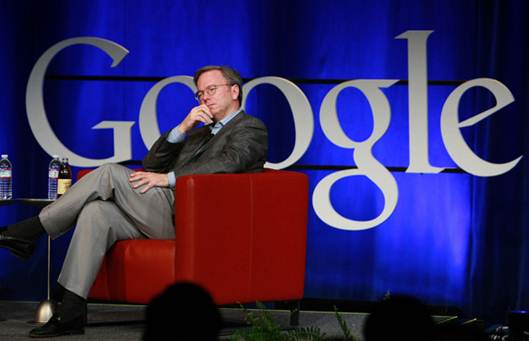We stumble upon a team dedicated to
personal data access and transparency.
These days most of us have sizeable amounts
of personal information stored on the web. Whether it be emails, documents,
images, music files or ebooks, the trend is to rely more and more on the
contents of cloud-based servers. Keeping tabs on all this information isn’t
easy. Managing it is an even bigger issue.

The
DLF Logo
The ability to view, download and delete
cloud-stored information is often heavily restricted. Try to uncover exactly
what details have been captured and stored and you’ll invariably be confronted
by a wall of silence. Why? Well, the value of personalized data to
organizations like Google, Apple, Facebook and Amazon is immense. If a user
cannot move their information en masse, they are far less likely to move to a
rival service. However, there is a small band of individuals whose goal it is
to liberate your personal data (or at least the stuff Google holds) and they
call themselves the Data Liberation Front.
Never heard of the Data Liberation Front?
You’re not alone, neither had I until quite recently. So, what’s their story?
A Message From The CEO
It all started with a company talk given by
Google CEO Eric Schmidt in which he said, “How do you be big without being
evil? We don’t trap end users. So if you don’t like Google, if for whatever
reason we do a bad job for you, we make it easy for you to move to our
competitor.”

Google
CEO Eric Schmidt
In the audience, Brian Fitzpatrick listened
intently. Despite being a Google employee for quite a few years, Fitzpatrick
was still seeking a project to make his own. Schmidt’s words were a catalyst
for Fitzpatrick. He started to think about gathering together a small team,
whose focus would be to provide users with a straightforward exit path from
Google products and services, if they so desired.
The underlying concept was that delivering
such a service would push Google’s engineers to develop products that were
always equal to, or better, than any of their competitors. As Fitzpatrick later
said, “If we make it even easier for people to leave our products, we’re going
to be forced to iterate even more quickly, and make our products better.”
With so much resting on the retention of
personal data, you might think embarking down this path would be difficult to
say the least. Fitzpatrick certainly had some doubts. Even on the way to
Schmidt’s office to discuss the idea, he considered if he might get fired. To
Schmidt’s credit, the answer was a resounding ‘Go ahead’.
Fitzpatrick immediately started to build an
internal Google engineering team and called it the Data Liberation Front (or
DLF).
The Challenge
Right from the start, the DLF came across
as a rather subversive group with a distinct identity. The name is a derivative
of The Judean People’s Front, which originated from Monty Python’s Life of
Brian. While the logo (see image) was chosen to emphasis the freedom fighting
nature of their mission and philosophy - a theme also used in their quirky
promotional video (see Links box out).
With so many Google products and services
the team faced a considerable challenge. Although Google already had a rich
collection of low-level programming interfaces, they didn’t always fit the
bill. And delivering a well-integrated solution, which also incorporates
appropriate levels of security, isn’t the simplest task in the world. As a
result it’s taken quite a while for the project to get off the ground.
Nevertheless, last year the DLF website
(dataliberation.org) appeared to showcase the fruits of their efforts. However,
well over a year later, visit any Google product or service website and you
won’t find any mention of the DLF team or their technology. So, it’s not surprising
many Google users are completely unaware of the DLF’s activities and the
services they offer.
And that’s where this article comes in. So,
let’s examine what’s available.

The
DLF Team (with Brian Fitzpatrick centre-seated)
Google Takeout
No, Google isn’t moving into the pizza
business. Google Takeout is a DLF engineered service to download data stored
against a number of Google products. Which ones are supported? Popular products
include GMail Contacts, Docs, Picasa Web Albums and Voice. In addition there’s
support for social-centric products such as Buzz, a list of your +1’s sites and
Google+ elements such as Profile, Circles and Stream (see the box outs for a
full list).
The DLF team have ensured the takeout
process is a pretty straightforward operation. Simply visit the Google Takeout
website (google.com/takeout), sign in with your account information and click
on the ‘Create Archive’ button. This will automatically generate a zip file
containing data from all the products listed - something that might take a
little while depending on how much information you’ve stored. This zip file can
then be downloaded with a single click.
While it’s quick, there are a few issues.
Wander through the zip file contents and you’ll soon notice a lack of
consistency. Photos and images in the Picasa Web Album are neatly arranged in
separate folders. But, for some reason, Google Docs are extracted into a single
folder regardless of the organizational structure you applied online.
To gain a little more control you can select
individual items via the ‘Choose Services’ tab. This approach will present
additional configuration opportunities.
Take Google Docs for example. There’s an
extra ‘Configure...’ option (see image) which offers control over the file
types. For instance, your text documents can be downloaded as plain text,
Microsoft Word, Open Office, RTF or PDF files. Drawings can be converted to
JPEG, PNG, Scaleable Vector Graphics (SVG) or PDF formats. Similar options
exist for presentations and spreadsheets. Select the Voice product and your
download will contain MP3 files for voice mail audio and textual transcripts of
each message.
The DLF website states they will try to
offer open standard file formats wherever possible, to aid cross-platform and
multi-application portability. GMail contacts, for example, are saved into
‘.vcf’ format file, which can be imported into numerous online email services,
plus many desktop, smartphone and tablets email apps. With a PC running
Microsoft Windows or Mac OS X, accessing it as easy as right clicking the file.
|
Links
DLF website: dataliberation.org
DLF Blog: dataliberation.blogspot.com
Google Takeout: google.com/takeout
DLF Video: goo.gl/cgcCW
|
|
Takeout Product List
·
+1s
·
Buzz
·
Contacts
·
Circles
·
Docs
·
Google+ Profile
·
Google+ Stream
·
Picasa Web Albums
·
Voice
|